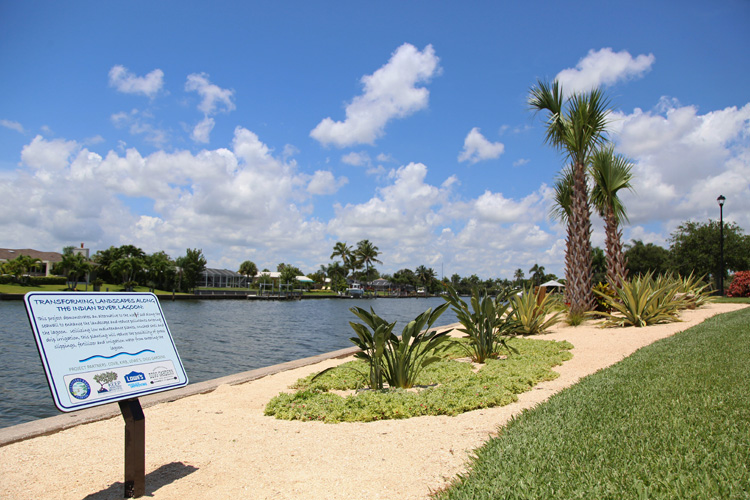
If you’ve visited A.W. Young Park on the Indian River Lagoon in Vero Isles recently, you probably noticed some attractive new landscaping lining the southern shoreline.
The park is at the tip of a peninsula formed by a canal on either side and the lagoon at the end. Sod that lined the southern seawall has been replaced by a 180-foot-long, 10-foot-wide bed of crushed coquina shells surrounding a variety of lush palms and other native and tropical plants. The park’s eastern and northern shorelines remain unchanged.
The landscaping is a pilot project launched to study lagoon pollution and demonstrate the benefits of environmentally-conscious landscaping for public and private green spaces – “a way to show people what can be done to be attractive and be lagoon-friendly,” said Nanette Haynes, the city’s grounds manager.
Haynes is working with the nonprofit Ocean Research and Conservation Association (ORCA) to find out how reclaimed water used to irrigate city parks impacts the lagoon.
ORCA research scientist Dr. Beth Falls and her colleagues installed eight gutters along both the newly landscaped and non-landscaped shorelines at Young Park to compare the amount of polluted water that flows into the lagoon from each one.
“It was the perfect case study for us,” Falls said. “We are in the process of collecting water samples from areas with buffered shorelines and those without. We want to have the science to demonstrate the value of buffered shorelines.”
Haynes said the eco-friendly landscaping cost a little over $12,000. She hopes private landowners will want to follow the park’s lead.
“There are homes across the canal [from the park] and you can see landscape guys edging and blowing and seeing this stuff going into the water,” Haynes said.
“We’re hoping once we show what we did, other people will want to do the same thing.”



